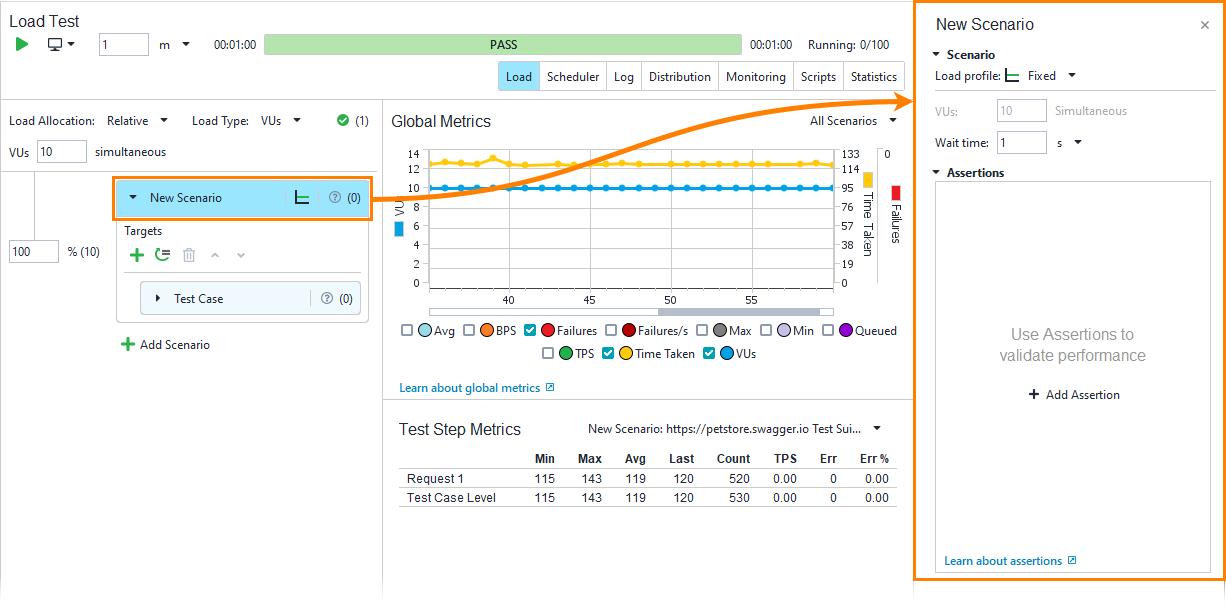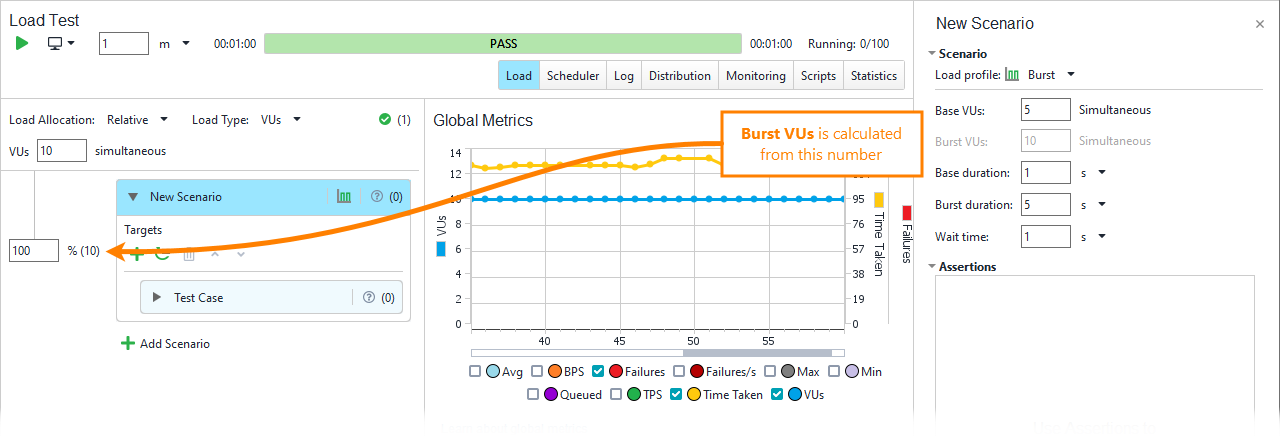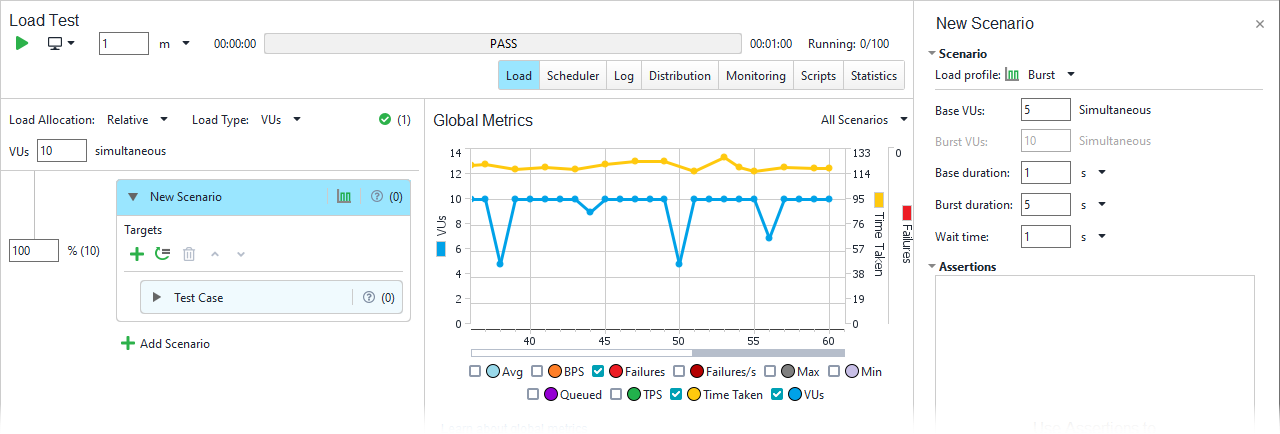You have successfully run your first load test. Now, let's change some parameters and run it again with a different load profile:
-
Switch to the Load page of the Load Test editor.
-
In the Load Type drop-down list, select VUs (simulate user behavior). When this load type is selected, the load profile settings specify the number of virtual users working simultaneously.
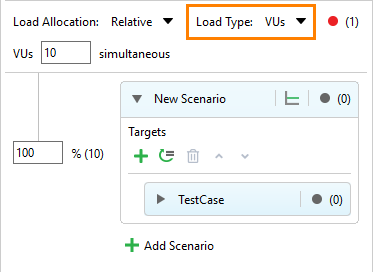
-
Click the load scenario. The scenario editor will be displayed in the panel on the right.
-
In the Load profile drop-down list, select the Burst profile. It simulates the load that varies during the test run as the profile icon indicates:
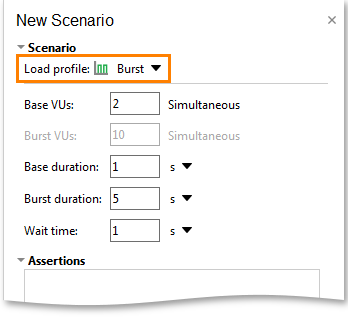
-
In Base VUs, enter the minimum number of virtual users to be simulated, for example, 5 users.
-
The Burst VUs value shows the maximum number of virtual users to be simulated. It is calculated from the load test settings. To increase it, increase the total number of VUs or the share of VUs that this scenario takes up.
In our tutorial, we have only one scenario, so it takes 100% of the virtual users. Set the VUs parameter to, for example, 10 users.

In the Base version, you can simulate up to 10 concurrent virtual users. To simulate more users, you need a ReadyAPI Performance license. You can try it for free. -
In Base duration, enter the time during which ReadyAPI will simulate the minimum number of virtual users, for example, 1 second.
-
In Burst duration, enter the time during which ReadyAPI will simulate the maximum number of virtual users, for example, 5 seconds.
-
In Wait time, enter the time ReadyAPI should wait before restarting the test for each virtual user, for example, 1 second.
Why restarting is needed: if simulation of some virtual user is over, the number of concurrent users decreases. If this number is less than the number the profile tries to simulate, ReadyAPI runs a new virtual user to reach the needed number.
-
Run the test.
During the test run, ReadyAPI will increase the number of virtual users until the specified maximum number is reached. Then, ReadyAPI will decrease the number of virtual users, then it will increase it again, and it will continue doing this until the test is over: -
Examine the test results to see how the performance of your target web service changes under the load.

